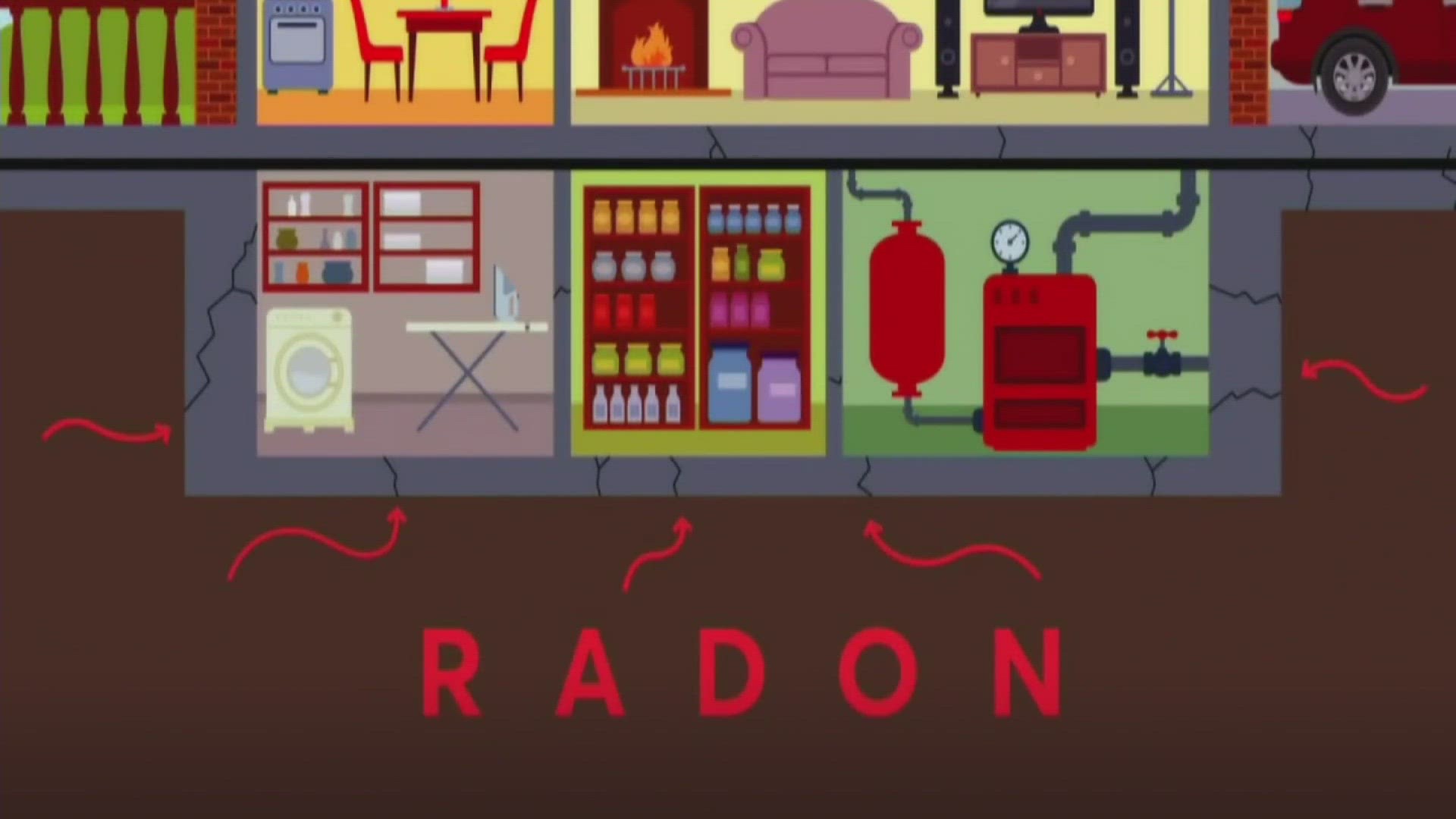GREENSBORO, N.C. — You can't see it. You can't smell it. You can't taste it. But if Radon gas is in your home it could cause you to get sick.
Radon is a radioactive gas, it is emitted from the soil that can seep into homes and buildings through cracks. Inhaling it has been linked to lung cancer.
In fact, Radon gas is the leading cause of lung cancer in non-smokers in our country. In North Carolina, 450 people die of radon-induced lung cancer every year.
The EPA has a map of Radon zones. While the zones help local and state agencies figure out where to spend their resources for awareness and to change building codes, elevated levels of Radon gas can be found in all counties in North Carolina.
The state has a fact sheet and action instructions for every county. For example in Guilford County, it is recommended that every resident needs to test their indoor air every two years and if you have a private well, the water needs to be tested as well.
“Radon, which is a colorless, odorless gas that can be present in any of our homes also can go undetected
you should test your house to make sure you don't have high levels of radon,” said Dr. Mohamed Mohamed, Thoracic Medical Oncologist with Cone Health.
The state partners with National Radon Program Services so you can get a Radon testing kit and get the results. The short-term kit is $17. It will test for radon for two to 90 days. The long-term kit is $27 and tests for over 90 days.
The CDC says the longer the test, the better to tell your year-round average radon level. You basically, open up the test kit and leave it in one room in the house. When you’re done you send it off for the results.


